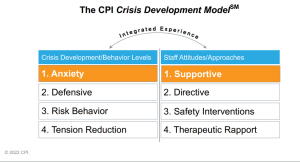
Photo by Alice Dietrich on Unsplash
If you’re a parent or educator, it probably isn’t the first time you’ve heard the word “makerspace.” You may picture robotics and computers. Some may picture pencils and sketches. Lego comes up often. Still, others may envision outdoor spaces with branches, rocks, and other natural elements. All of these are right and it speaks to the flexibility of makerspaces.
A makerspace has been described as, “… (A) collaborative work space inside a school, library or separate public/private facility for making, learning, exploring and sharing that uses high tech to no tech tools.” (Link)
Another description is, “(A) room that contains tools and components, allowing people to enter with an idea and leave with a project.” (Link)
Yet another describes it as, “(N)ot solely a science lab, woodshop, computer lab or art room, but it may contain elements found in all of these familiar spaces. Therefore, it must be designed to accommodate a wide range of activities, tools and materials. Diversity and cross-pollination of activities are critical to the design, making and exploration process, and they are what set makerspaces and STEAM labs apart from single-use spaces.” (Link)
It’s clear that there is no single, consensus definition of what a makerspace is and I’d argue it doesn’t need one. In fact, that’s what makes them so valuable in providing learning opportunities (both in schools and out).
Makerspaces are creative spaces. They are invitations to possibility. They allow students to be creative, to design, and ultimately, to express themselves. They allow for expression of ideas and feelings.

Photo by Kevin Jarrett on Unsplash
Typically, a makerspace is a designated space in a school (usually in a library or tech room) where students create a product. The set-up looks different from school-to-school, teacher-to-teacher, and year-to-year. Makerspaces are mentioned often in conjuction with STEM (Science, Technology, Engineering, Math), STEAM (Same acronym with A for Arts), and STREAM (Same acronym with R for Reading). Yet, the design studio and product creation aspects are essential to any makerspace model.
My interest comes from my work in special education; particularly strategies and programs that are adaptable for student learning. As educators, we should look beyond subjects and content to instruction models and learning opportunities. We need to look past the lack of funding, materials, and spaces; easier said than done but it’s not impossible. It’s more of a mind shift to focus on the potential and the possible.
I suggest we start looking at our students’ strengths. That we start looking at the materials we have and the spaces we have; in the school building, outside of it, and in student homes. That we look at the potential gain instead of the perceived potential loss.
Makerspaces do not have to be limited to computers and tech-related topics. Here is a brief list of instruction models, topics, and locations where makerspaces have been used in:
- Outdoor education
- Montessori
- Visual Arts
- Universal Design for Learning (UDL)
- Tiered interventions for supporting inclusion and behaviour practices
- Gardening
- Cooking
- Science
- Social Studies
I am NOT an expert with makerspaces. With this blog, I’m hoping to explore strategies and models that can support ALL students to be successful. We can find new ways to engage students and provide them with opportunities to demonstrate their learning beyond pencil and paper. I’m hoping to provide some detailed examples and suggestions on the blog in the future. There are many rich opportunities for using makerspaces to support learning.



